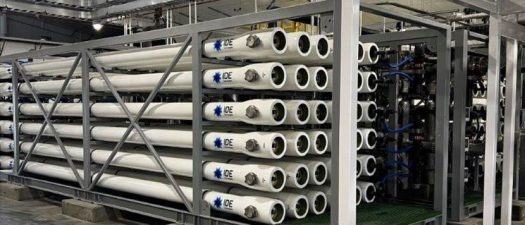Across industries, the move toward sustainability is no longer optional — it’s essential. .
Understanding Wastewater Treatment: Your Top 7 FAQs Answered

Wastewater treatment is essential for public health, environmental protection, and sustainable development. By removing harmful pathogens and contaminants, effective wastewater treatment ensures that water can be safely returned to rivers, lakes and oceans.Treated water can then be reused for agricultural, industrial, and even potable purposes, helping to conserve precious water resources.
Below, we answer the seven most frequently asked questions we get about about wastewater treatment:
Q: How does wastewater treatment work?
A: The basic methodology used for wastewater treatment involves evaluating the specific characteristics of the wastewater stream and determining the quality of water required. Based on these assessments, we tailor a sequence of treatments designed to achieve the desired water quality efficiently.
Q: Which technologies are used in modern wastewater treatment?
A: Treating industrial wastewater involves a diverse range of processes, depending on the specific industry and the characteristics of the effluent. These processes can vary from simple filtration or solid separation techniques to more advanced methods like advanced oxidation processes (AOP), reverse osmosis (RO) solutions, and evaporators. On the other hand, municipal wastewater treatment typically follows a standardized multi-step approach, which can be divided into three main stages:
- Primary treatment: This is the initial stage, where larger solid particles and debris are removed from the wastewater through physical processes like screening and sedimentation.
- Secondary treatment: In this stage, biological processes are employed to remove dissolved and suspended organic matter from the wastewater. This is typically achieved through the use of aerobic or anaerobic bacteria that consume the organic pollutants.
- Tertiary treatment: This advanced stage involves additional treatment processes to further purify the wastewater by removing remaining suspended solids, nutrients (such as nitrogen and phosphorus), and other pollutants. Common tertiary treatment methods include filtration, disinfection, and nutrient removal techniques.
This multi-step approach for municipal wastewater treatment aims to produce an effluent that meets the required standards for discharge or reuse, while industrial wastewater treatment processes are tailored to the specific contaminants and pollutants present in the effluent from different industries.
Q: What are the challenges in wastewater treatment?
A: Wastewater treatment faces several significant challenges, especially as demands increase due to population growth and as environmental standards become stricter. Here are some of the common challenges:
- High Costs: Building, maintaining, and upgrading wastewater treatment facilities involve significant capital investment. Operational costs are driven by the combined effect of energy-intensive processes, chemical usage, and the need for skilled labor.
- Energy Consumption: Wastewater treatment is a significant energy consumer, particularly during the aeration processes and the transport of water through pumping stations. Optimizing these areas while maintaining treatment efficacy remains a crucial challenge.
- Removal of Contaminants: While traditional treatment effectively removes common contaminants, it falls short when it comes to newer chemical pollutants. Advanced methods exist to tackle these micropollutants like pharmaceuticals and pesticides. However, these come at a higher cost and require greater technical expertise to operate.
- Regulatory Compliance: Wastewater treatment plants must comply with local and international environmental regulations, which can vary widely and change frequently. Compliance involves constant and continuous monitoring, reporting, and technological adjustments.
Q: Can wastewater be reused? How?
A: Yes, Wastewater can be a valuable resource after undergoing rigorous treatment. Primary, secondary, and advanced processes remove contaminants, followed by disinfection to eliminate pathogens. This treated water, suitable for non-potable (irrigation, industry) or even potable applications, is then distributed for reuse.
Q: What are the costs involved in wastewater treatment?
A: Wastewater treatment incurs significant expenses. Capital costs include construction, land acquisition, and initial equipment expenses. Operational costs are largely driven by energy consumption, chemicals, labor, and ongoing maintenance. Administrative costs involved with regulatory compliance and management expenditures are an additional expense. Sludge disposal, which includes treatment and safe disposal of byproducts, also represents a notable expense. Additionally, facilities face upgrade and replacement costs over time due to wear and operational demands. Financing costs also contribute to the overall financial burden of wastewater treatment.
In recent years, the Public-Private Partnership (P3) model has become a popular method for developing sustainable, efficient, and cost-effective water infrastructure in numerous communities. This model ensures a smooth distribution of risk and a well-balanced incentive structure, allowing each contracting party to concentrate on its strengths. Municipal agencies are able to maximize their limited resources, while private partners gain rewards proportional to their contributions to the project and the capital they risk. Learn more about the P3 collaborative model in this webinar
Q: What are the long-term economic benefits of efficient wastewater management
A: Efficient wastewater management and adoption of appropriate technologies provide considerable long-term economic benefits. It enables resource recovery, lowering costs and generating potential revenue streams. A well-managed wastewater treatment system can lower the fees associated with environmental penalties and reduce potential liabilities from pollution incidents, thus mitigating financial risks. Lastly, treated wastewater can be reused for agricultural, industrial, and potable purposes, significantly decreasing the demand for fresh water in water-scarce areas.
Q: Is wastewater treatment regulated in different areas of the world?
A: Wastewater treatment is regulated differently around the world, reflecting the diverse environmental, health, and safety standards specific to each region. Regulations are often shaped by local water quality needs, the sensitivity of local ecosystems, and public health concerns.
A good example demonstrating different regulation involves PFAS, a large group of synthetic chemicals also known as “forever chemicals” which can accumulate in the human body, taking years to eliminate, and cause serious health risks.
The European Union has regulated PFAS since 2008, and certain types of forever chemicals are outright banned. Australia has had policies regulating PFAS for at least six years. In France, a law banning PFAS in almost all newly manufactured products except cookware passed the National Assembly on April 4, while, in the U.S., the Environmental Protection Agency set national limits on six types of PFAS in drinking water for the first time ever on April 10. Learn more about PFAS treatment in this blog
Do you have a question about wastewater treatment?
Wastewater treatment stands as a pivotal practice in sustainable resource management, offering significant economic and environmental benefits. By reducing reliance on freshwater sources, diminishing pollution, and supporting agricultural, industrial and municipal needs, wastewater recycling plays a crucial role in preserving our water supplies for future generations.
Talk to our experts about your wastewater treatment needs.
















